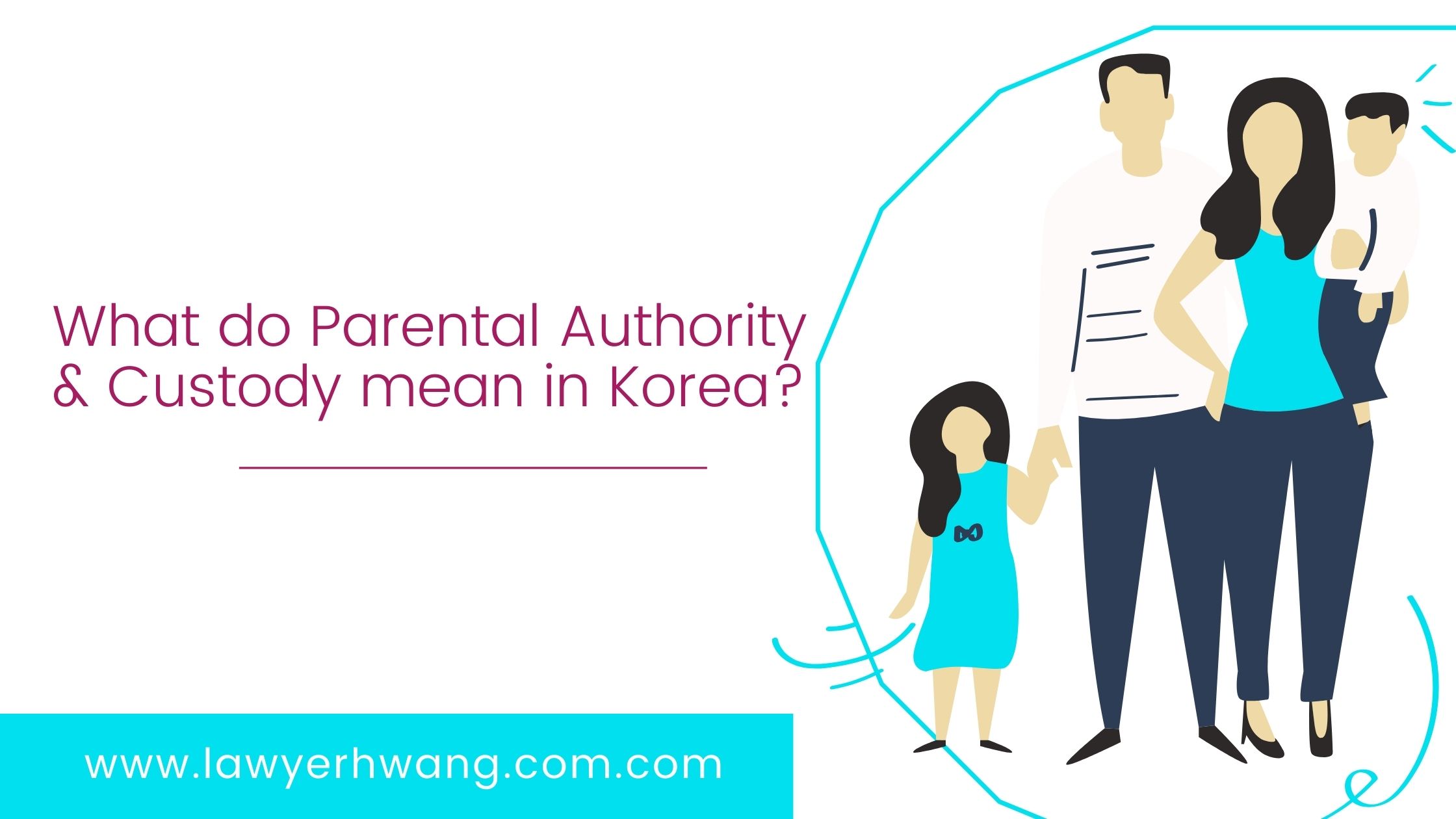
How to Get an International Divorce in Korea
October 19, 2023
How to Get an International Divorce in KoreaPart III
November 17, 2023How to Get an International Divorce in Korea
Part II: Kinds of Divorce in Korea
1.Introduction
In this second part of the series, “How to Get an International Divorce in Korea”, I’m explaining the kind of divorce in Korea and the legal procedures of each kind of divorce.
2. Divorce by Agreement
Before starting a divorce process in Korea, you should know the kinds of divorce processes in Korea and understand the pros and cons of each kind of divorce.
There are two kinds of divorce in Korea. One is divorce by agreement and the other is judicial divorce. If both parties agree to divorce and there is no disagreement on parental authority, child custody, child support, visitation rights, it is possible to go through divorce by agreement. But it should be noted that the court form for divorce by agreement does not state anything about asset division. So, if you need to set the terms and conditions on asset division, you should make a separate agreement on asset division by yourselves.
Another issue that you should consider is whether you need to register divorce in a different county including your home country. If you registered your marriage in a different country, you should check whether divorce by agreement can be recognized in the country where your marriage was registered. Some countries do not recognize divorce by agreement in a foreign country. So if the country where your marriage was registered does not accept divorce by agreement, you should go through the process of judicial divorce.
Also, if you have an F6 visa, it means a spouse visa, and you have no kids, your visa will not be extended after getting a divorce by agreement. An F6 visa holder having no kids should prove that his or her Korean spouse has faults at divorce in order to extend the F6 visa after divorce. However, the immigration office is not able to judge who is responsible for divorce with the court papers of divorce by agreement. Therefore, if you have decided to divorce due to your Korean spouse’s faults at divorce and you want to stay in Korea after getting a divorce, you should choose to file a judicial divorce.
Then, how does divorce by agreement work? I’ll explain the legal procedures of divorce by agreement. The process is quite easy and simple to follow. And as for divorce by agreement, you do not need a lawyer’s assistance. To be exact, a lawyer cannot represent a party for divorce by agreement in the family court. What you need to do is to go to the family court in person, fill out the court form, submit it to the court and have a cooling off period.
If you have kids, you will have three month cooling off period and if you have no kid, you will have one month cooling off period. The point to keep in mind here is that the cooling off period is not considered to be as a pre divorce stage but the period is given to help the spouses to reconsider reconciliation. Therefore, if a person having a cooling off period has an affair with someone else, it will be regarded as infidelity as well. There is a court precedent to clarify this point.
After the cooling off period, you should attend the family court with your soon to be ex-spouse in person and confirm your intent to get a divorce to a judge. Then the judge will stamp the court paper. But this is not the end of the process. You should register divorce at a district office like gu-office within three months from the date of confirmation of the intent of divorce by agreement. If you fail to register divorce within that period, the court paper with the judge’s stamp will have no legal effect and you should repeat all the steps of the procedures.
3. Judicial Divorce
The other type of divorce is judicial divorce. Judicial divorce has two processes; one is court mediation and the other is trial. In principle, a petition for a court mediation should be filed first before going to a trial. However, the mediation is highly likely to fail, you can go directly to a trial without having a mediation. Court mediation can be good option in that a lawyer can represent a party and all detailed terms and conditions with regard to divorce can be discussed with mediators. Also, it takes less time for the proceedings of mediation compared to those of trial. Additionally, divorce shall be legally effective immediately if the mediation is completed. If mediation fails, the case will be sent to a trial.
During the trial process, the plaintiff shall have burden of proof. Therefore, the plaintiff should submit evidence to the court so as to prove his or her claims. After a plaintiff files a complaint, the defendant should submit an answering brief within 30 days from the date when the complaint is served to the defendant. If the defendant refuses to accept the plaintiff’s claims, the defendant should refute the plaintiff’s arguments. Roughly, it takes 8 months to one year or longer for the first trial to be ended. And if both parties are fighting over parental authority or child custody, it will take more time for the court to conduct family investigation. During the trial, if it seems that both parties reaches an agreement, a court medication can be re-open.
After a court decision is made in the first trial, the losing party can appeal two times. And if the decision is finalized and conclusive, the losing party shall pay the other party’s litigation costs including lawyer’s fees. And the amount of the lawyer’s fees that the losing party shall pay will be decided based on the claimed amount and there is a cap on the amount based on the relevant court rule.
Related posts
Blog Articles
Contact Information
201, 160, Seochojungang-ro, Seocho-gu, Seoul, Republic of korea.
Phone: +82-2-535-1235
Mobile: 010 5349 1235
Fax: +82-2-536-1236
Email: [email protected]







































![[Supreme Court Decision – Criminal Law] – On Intent of Defamation](https://lawyerhwang.com/wp-content/uploads/2020/03/Supreme-Court-Decision-–-Criminal-Law-–-On-Intent-of-Defamation.png)
![[Supreme Court Decision – Criminal Law] – On Uploading a “Torrent File” of Obscene Videos](https://lawyerhwang.com/wp-content/uploads/2020/03/Supreme-Court-Decision-–-Criminal-Law-On-Uploading-a-“Torrent-File”-of-Obscene-Videos.png)






























